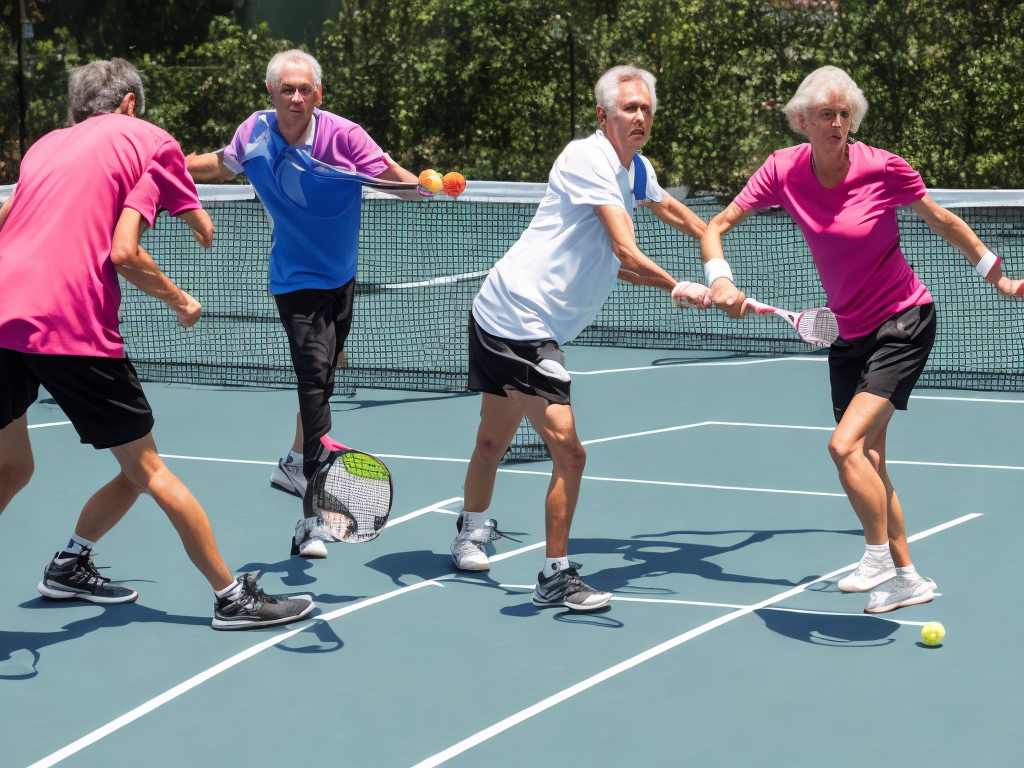
In the realm of racket sports, pickleball and tennis are two popular and engaging options. While they may seem similar at first glance, pickleball and tennis actually have several distinguishing features that make them unique. In this article, we will explore the key differences between pickleball and tennis.
First and foremost, the most noticeable difference between the two sports is the playing surface. Tennis is traditionally played on a rectangular court, measuring 78 feet in length and 27 feet in width for singles matches, and 36 feet in width for doubles matches. On the other hand, pickleball is played on a smaller, rectangular court that measures 44 feet in length and 20 feet in width for both singles and doubles matches. The significant size difference in the court affects various aspects of the game, including movement, strategy, and court coverage.
Another prominent difference lies in the equipment used in each sport. Tennis players use a racket that is typically made of lightweight materials such as graphite or carbon fiber. The racket has a larger head and a longer handle, allowing for more power and reach during shots. In contrast, pickleball players use a paddle, which is much smaller and composed of materials like wood, graphite, or composite. The paddle has a shorter handle, and the head is solid and flat. The difference in equipment affects the style and execution of shots, as well as the level of control players have over the ball.
Furthermore, the balls used in pickleball and tennis also differ significantly. In tennis, a standard tennis ball is used, which is made of rubber, covered in a felt material, and filled with air. These balls are larger and denser, allowing for a faster and more powerful trajectory during gameplay. Pickleball, on the other hand, utilizes a perforated plastic ball that is similar in size to a baseball. The holes in the ball lower its speed, making it easier to control and manipulate during rallies. The variation in ball type directly impacts the pace and style of play in each sport.
Moving on to the gameplay itself, both pickleball and tennis have their own set of rules and scoring systems. In tennis, the game consists of either a singles match (one player per side) or a doubles match (two players per side). The objective is to hit the ball over the net and into the opponent's court without them returning it successfully. Points are scored when the opponent fails to return the ball correctly or it goes out of bounds. Matches are typically best of three or five sets, and the winner is determined by the number of sets won.
On the other hand, pickleball can be played in singles or doubles matches as well. The primary objective is to hit the ball over the net without it going out of bounds, aiming to force the opponent into making a mistake. The scoring in pickleball is different from tennis, as it follows a rally scoring system. This means that points are scored by the serving side regardless of who served, and matches are typically played to 11 or 15 points. Additionally, pickleball employs a "non-volley zone" or "kitchen" area, which is a designated area near the net where players cannot volley the ball. This rule adds a strategic element to the game, as players must carefully position themselves to avoid foot faults.
Strategy also plays a significant role in both sports. Tennis offers a wide range of strategic options due to the larger court size and ball speed. Players can employ different shot types such as groundstrokes, volleys, and serves to outmaneuver their opponents. The long rallies and extended court coverage require players to have good endurance, agility, and accuracy. In pickleball, the smaller court size and slower ball speed favor a more controlled and tactical approach. Players often engage in dinking, which involves softly hitting the ball over the net to create opportunities for their teammates. The compact court forces players to be more precise in shot placement rather than relying solely on power.
Lastly, the level of physical exertion differs in pickleball and tennis. Tennis is known for its demanding nature, as players constantly move across the court, cover a larger area, and exert more power in their shots. It requires a higher level of endurance, agility, and strength due to the longer rallies and more significant court coverage. On the other hand, pickleball is comparatively less physically demanding. The smaller court size and slower ball speed result in shorter rallies and less running, making it more accessible to players of all ages and fitness levels.
In conclusion, pickleball and tennis are both captivating racket sports that offer unique experiences for players and spectators alike. The differences lie in the playing surface, equipment, balls, rules, strategy, and physical exertion. Whether one prefers the high-speed, long rallies of tennis, or the tactical, controlled gameplay of pickleball, both sports provide endless entertainment and challenges. So, whether you choose to grab a racket or paddle, get on the court, and enjoy the thrill of these remarkable sports!
 Self-Instruct
Self-Instruct